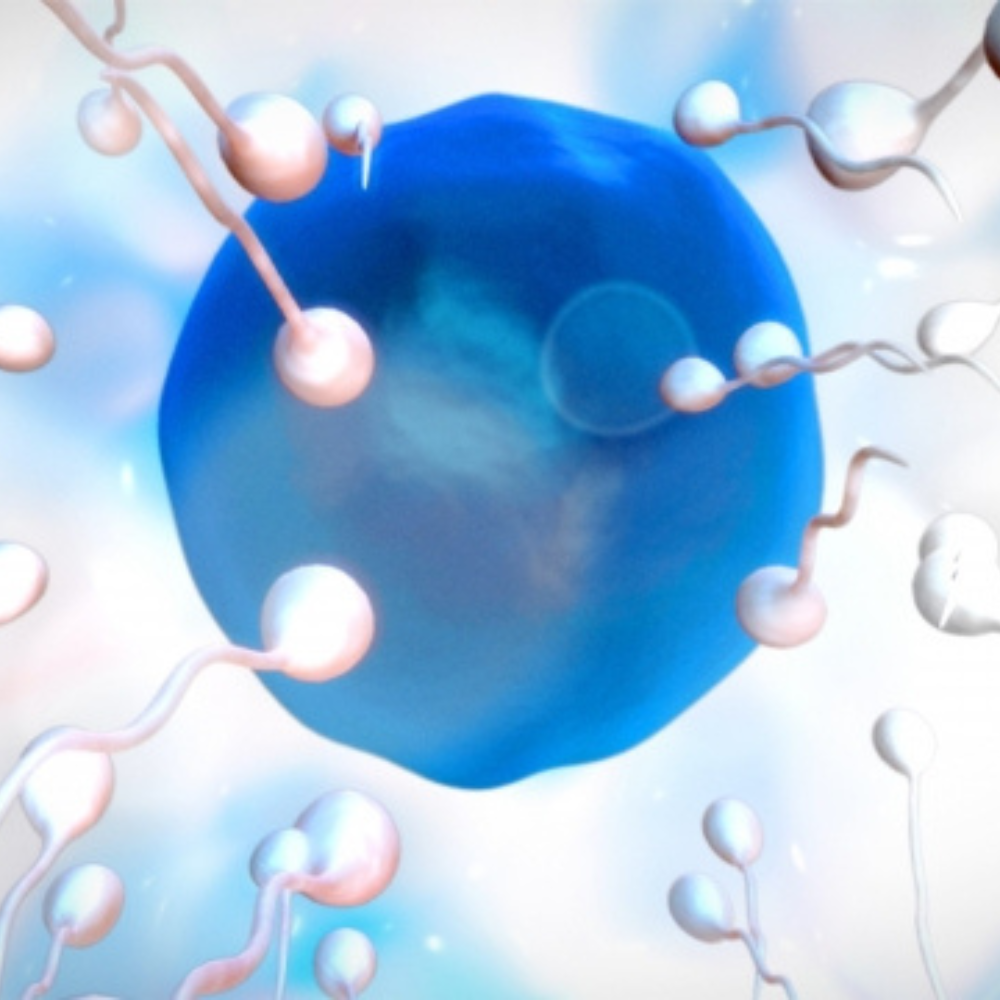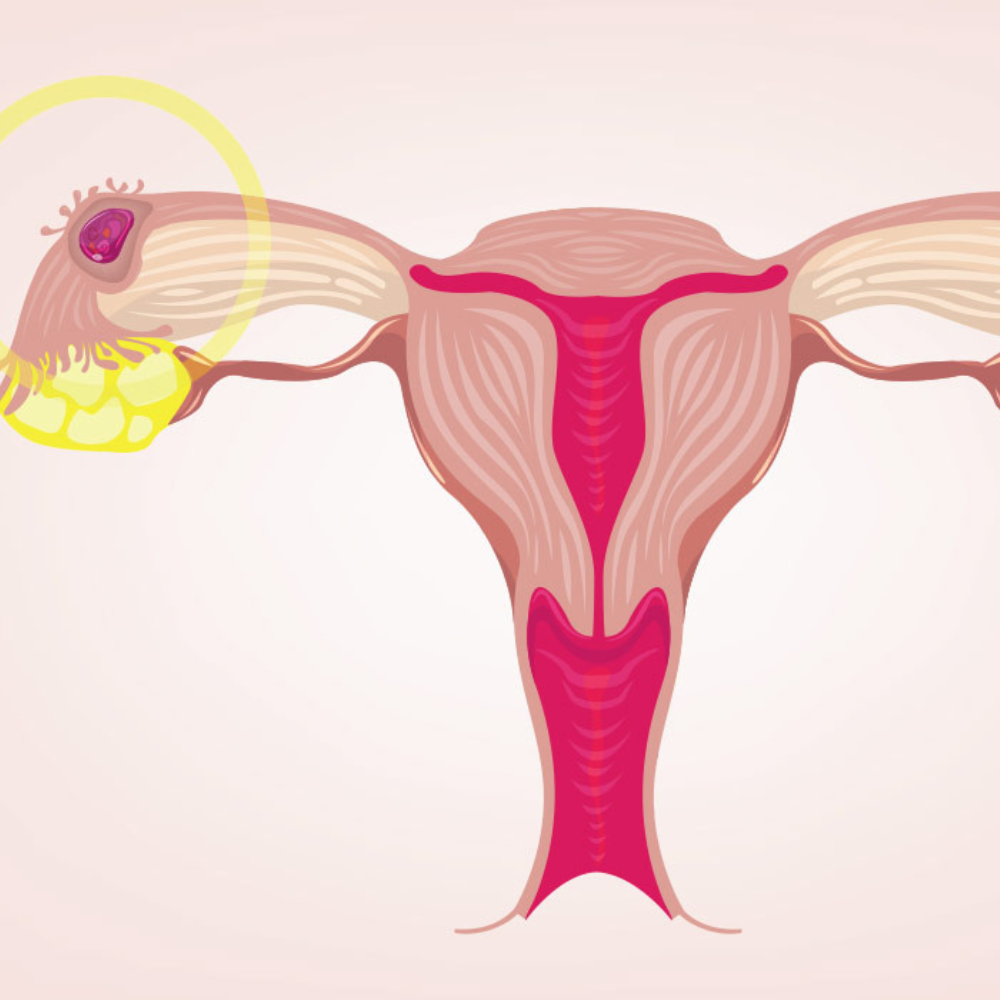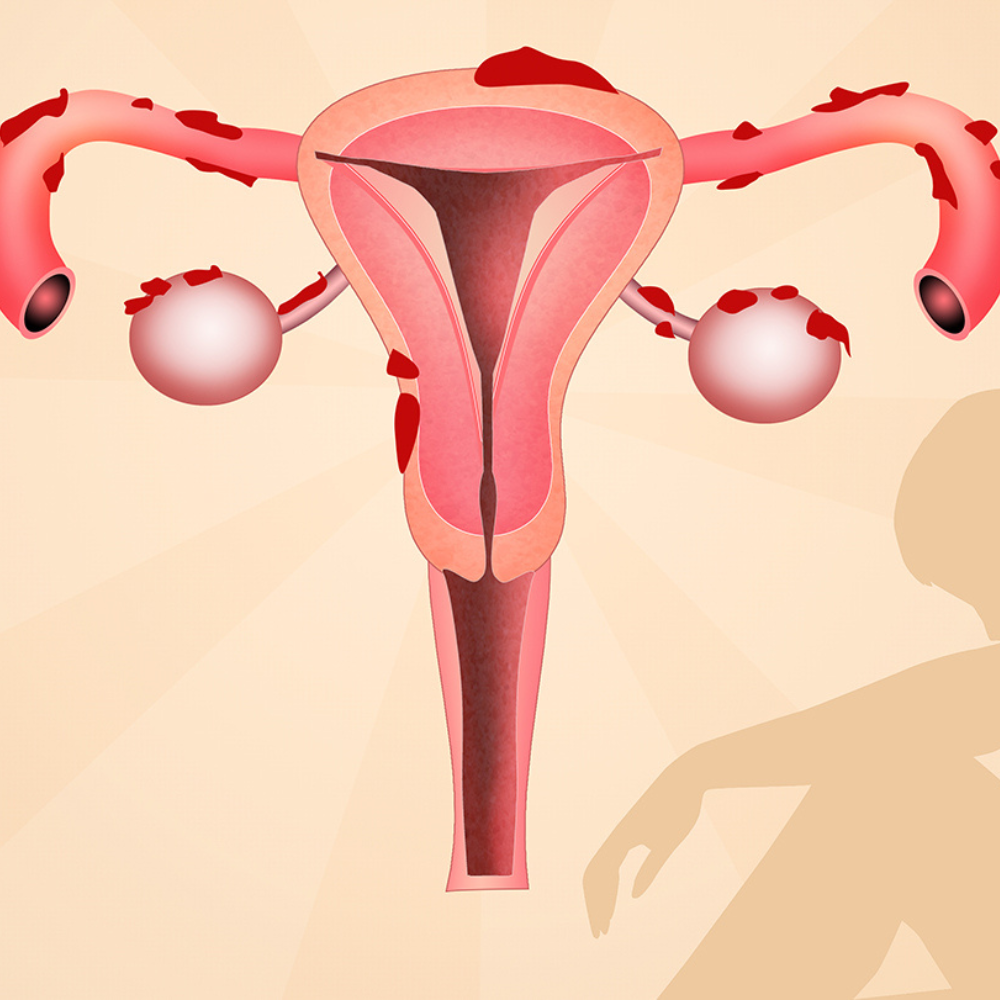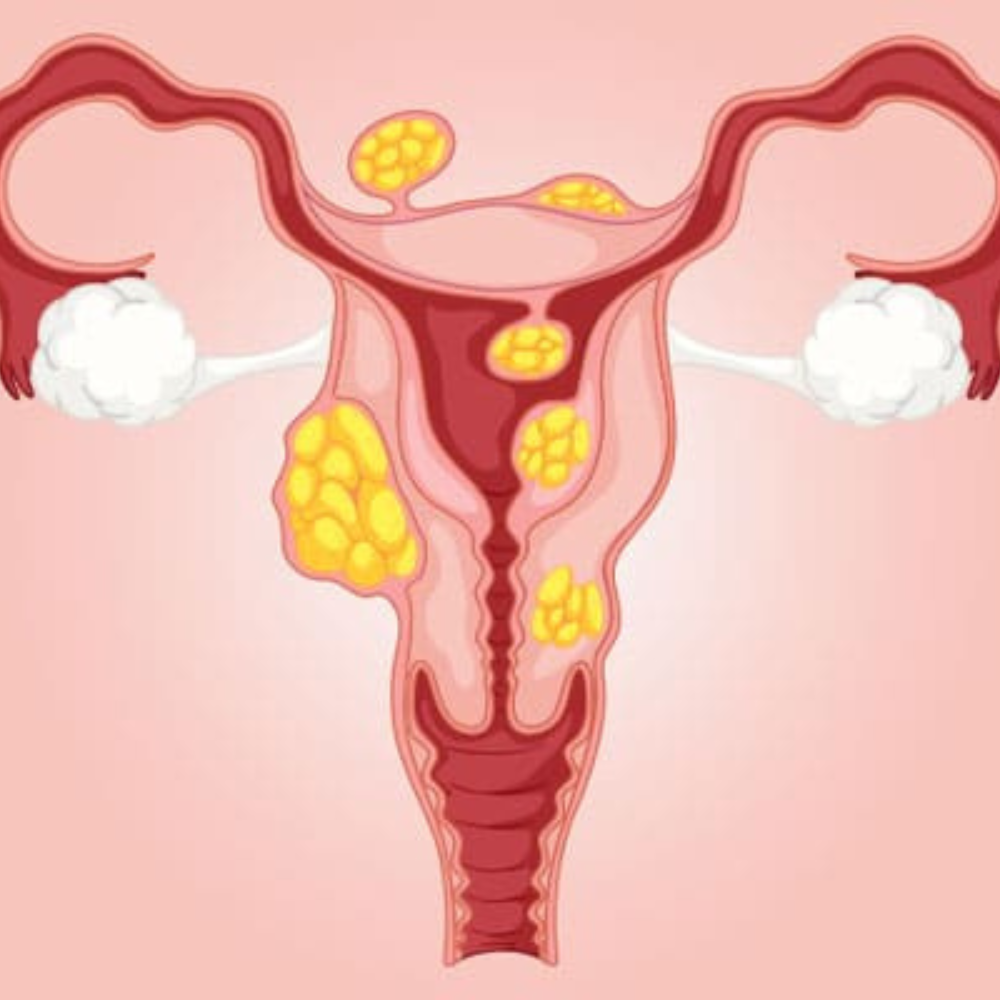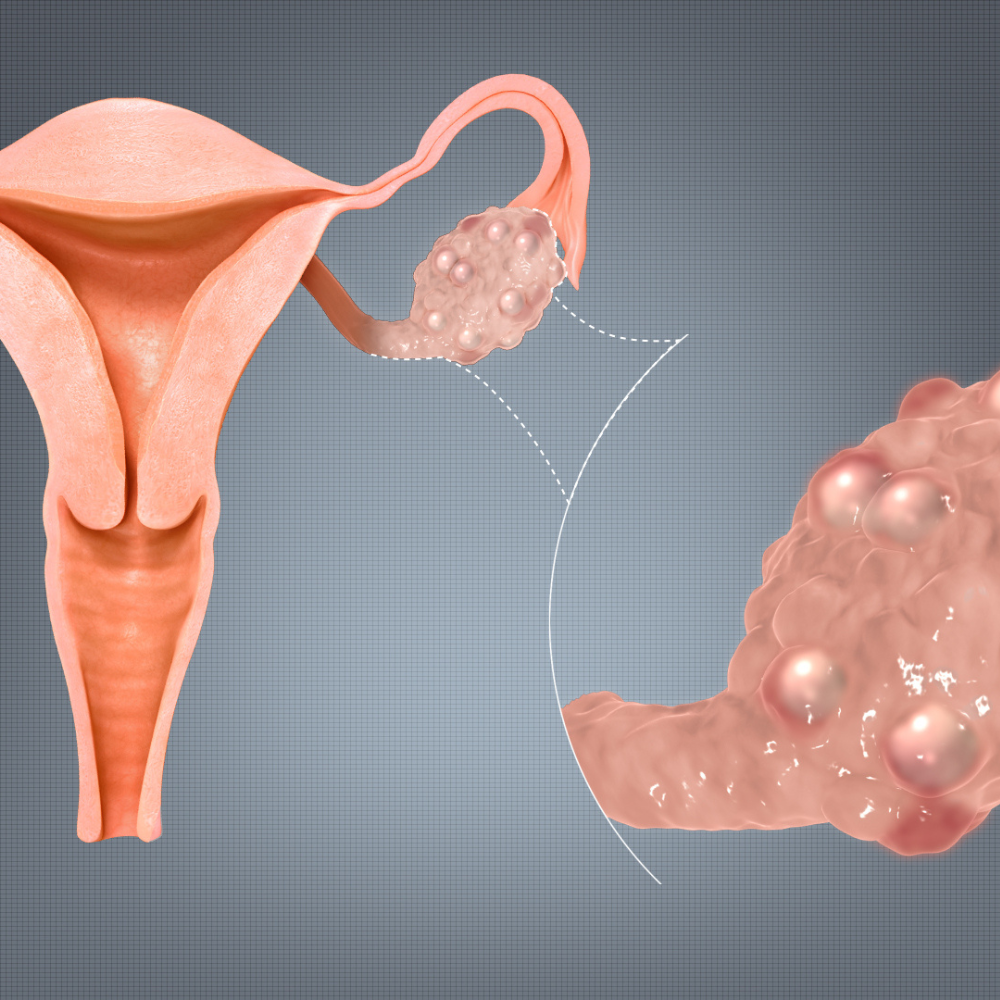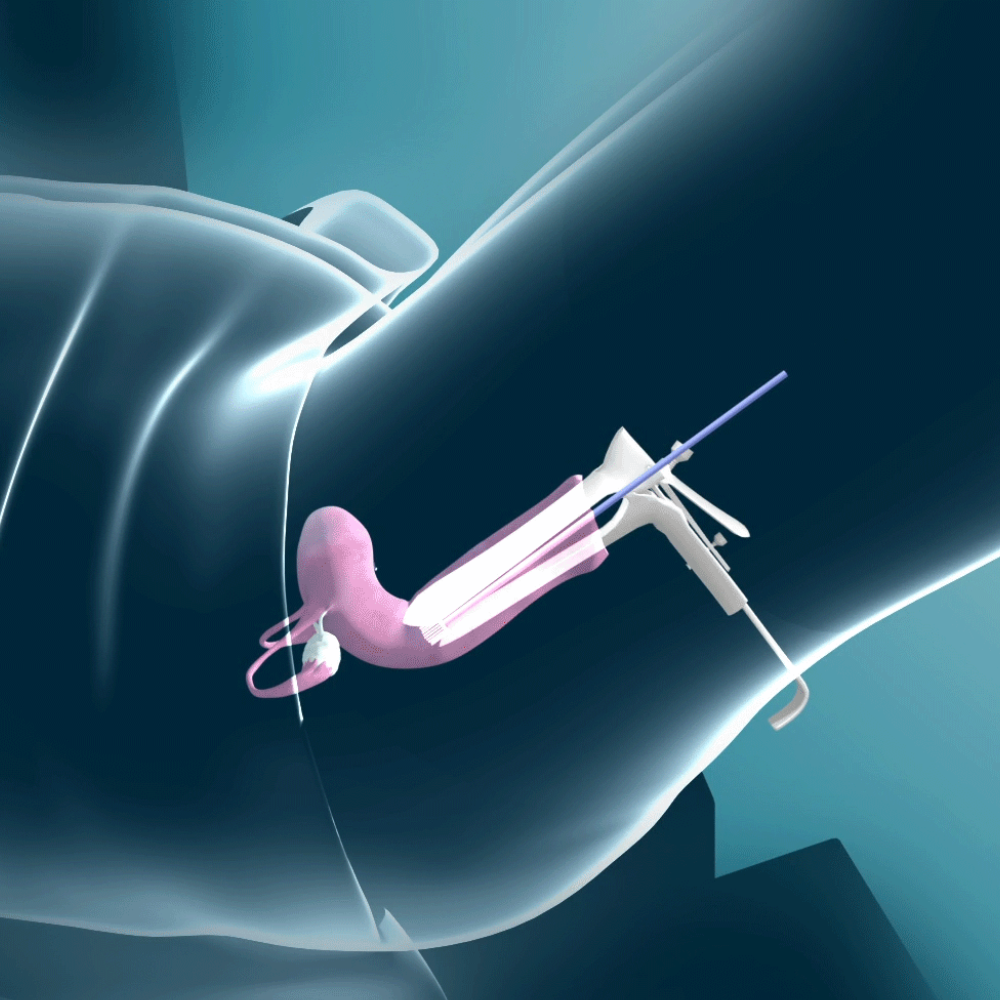FAQ
We are here to help you through every hurdle you face. We have anticipated a few queries you may have.
Know everything here because we have sorted everything out for you.
Ask us anything !

Frequently Asked Questions About Infertility
Pregnancy is the result of a process that has many steps. To get pregnant:
• A woman’s body must release an egg from one of her ovaries (ovulation).
• The egg must go through a fallopian tube toward the uterus (womb).
• A man's sperm must join with (fertilize) the egg along the way.
• The fertilized egg must attach to the inside of the uterus (implantation).
• Heavy alcohol use
• Drugs
• Smoking cigarettes
• Age
• Environmental toxins, including pesticides and lead
• Age
• Smoking
• Excess alcohol use
• Stress
• Poor diet
• Athletic training
• Being overweight or underweight
• Sexually transmitted infections (STIs)
• Age of the partners
• Reason for infertility
• Clinic
• In vitro fertilization (IVF) means fertilization outside of the body. IVF is the most effective ART. It is often used when a woman's fallopian tubes are blocked or when a man produces too few sperm. Doctors treat the woman with a drug that causes the ovaries to produce multiple eggs. Once mature, the eggs are removed from the woman. They are put in a dish in the lab along with the man's sperm for fertilization. After 3 to 5 days, healthy embryos are implanted in the woman's uterus
• Intracytoplasmic sperm injection (ICSI) is often used for couples in which there are serious problems with the sperm. Sometimes it is also used for older couples or for those with failed IVF attempts. In ICSI, a single sperm is injected into a mature egg. Then the embryo is transferred to the uterus or fallopian tube.
ART procedures sometimes involve the use of donor eggs (eggs from another woman), donor sperm, or previously frozen embryos. Donor eggs are sometimes used for women who can not produce eggs. Also, donor eggs or donor sperm is sometimes used when the woman or man has a genetic disease that can be passed on to the baby. An infertile woman or couple may also use donor embryos. These are embryos that were either created by couples in infertility treatment or were created from donor sperm and donor eggs. The donated embryo is transferred to the uterus. The child will not be genetically related to either parent.
Surrogacy Women with no eggs or unhealthy eggs might also want to consider surrogacy. A surrogate is a woman who agrees to become pregnant using the man's sperm and her own egg. The child will be genetically related to the surrogate and the male partner. After birth, the surrogate will give up the baby for adoption by the parents. Gestational Carrier Women with ovaries but no uterus may be able to use a gestational carrier. This may also be an option for women who shouldn't become pregnant because of a serious health problem. In this case, a woman uses her own egg. It is fertilized by the man's sperm and the embryo is placed inside the carrier's uterus. The carrier will not be related to the baby and gives him or her to the parents at birth.
Frequently Asked Questions About Pap Test
• Starting at age 21, have a Pap test every 2 years.
• If you are 30 years old and older and have had 3 normal Pap tests for 3 years in a row, talk to your doctor about spacing out Pap tests to every 3 years.
• If you are over 65 years old, ask your doctor if you can stop having Pap tests.
Ask your doctor about more frequent testing if:
• You have a weakened immune system because of organ transplant, chemotherapy, or steroid use
• Your mother was exposed to diethylstilbestrol (DES) while pregnant
• You are HIV-positive Women who are living with HIV, the virus that causes AIDS, are at a higher risk of cervical cancer and other cervical diseases. The U.S. Centers for Disease Control and Prevention recommends that all HIV-positive women get an initial Pap test, and get re-tested 6 months later. If both Pap tests are normal, then these women can get yearly Pap tests in the future.
• Women over age 65 who have had 3 normal Pap tests and in a row and no abnormal test results in the last 10 years, and have been told by their doctors that they don’t need to be tested anymore.
• Women who do not have a cervix and are at low risk for cervical cancer. These women should speak to their doctor before stopping regular Pap tests.
● Douching
● Using tampons
● Using vaginal creams, suppositories, and medicines
● Using vaginal deodorant sprays or powders
● Having sex
● Colposcopy: The doctor uses a tool called a colposcope to see the cells of the vagina and cervix in detail.
● Endocervical curettage: The doctor takes a sample of cells from the endocervical canal with a small spoon-shaped tool called a curette.
● Biopsy: The doctor removes a small sample of cervical tissue. The sample is sent to a lab to be studied under a microscope.
The FDA recently approved the LUMA Cervical Imaging System. The doctor uses this device right after a col poscopy. This system can help doctors see areas on the cervix that are likely to contain precancerous cells. The doctor uses this device right after a colposcopy. This system shines a light on the cervix and looks at how different areas of the cervix respond to this light. It gives a score to tiny areas of the cervix. It then makes a color map that helps the doctor decide where to further test the tissue with a biopsy. The colors and patterns on the map help the doctor tell between healthy tissue and tissue that might be diseased.
For more information talk to your reproductive medicine specialist today. Dr Sachin Narvekar MD (O&G),FRM,is an endoscopy and fertility consultant attached to Vrundavan Hospital. He has undergone postdoctoral fellowship training in Reproductive Medicine from Bangalore. He was working as a consultant at Bangalore Assisted Conception and has performed a number of endoscopy and IVF (test tube baby) procedures. After returning to Goa he has established the assisted conception unit at Vrundavan Hospital Santa-Cruz.Dr Narvekar has published a number of research papers in this field. He is the member of Indian Society for Assisted reproduction
Frequently Asked Questions About Fibroids
● Age. Fibroids become more common as women age, especially during the 30s and 40s through menopause. After menopause, fibroids usually shrink.
● Family history. Having a family member with fibroids increases your risk. If a woman’s mother had fibroids, her risk of having them is about three times higher than average.
● Ethnic origin. African-American women are more likely to develop fibroids than white women.
● Obesity. Women who are overweight are at higher risk for fibroids. For very heavy women, the risk is two to three times greater than average.
● Eating habits. Eating a lot of red meat (e.g., beef) and ham is linked with a higher risk of fibroids. Eating plenty of green vegetables seems to protect women from developing fibroids.
● Submucosal (sub-myoo-KOH-zuhl) fibroids grow into the uterine cavity.
● Intramural (ihn-truh-MYOOR-uhl) fibroids grow within the wall of the uterus.
● Subserosal (sub-suh-ROH-zuhl) fibroids grow on the outside of the uterus.
Some fibroids grow on stalks that grow out from the surface of the uterus or into the cavity of the uterus. They might look like mushrooms. These are called pedunculated (pih-DUHN-kyoo-lay-ted) fibroids.
● heavy bleeding (which can be heavy enough to cause anemia) or painful periods
● feeling of fullness in the pelvic area (lower stomach area)
● enlargement of the lower abdomen
● frequent urination
● pain during sex
● lower back pain
● complications during pregnancy and labor, including a six-time greater risk of cesarean section
● reproductive problems, such as infertility, which is very rare
● hormonal (affected by estrogen and progesterone levels)
● genetic (runs in families) Because no one knows for sure what causes fibroids, we also don't know what causes them to grow or shrink. We do know that they are under hormonal control—both estrogen and progesterone. They grow rapidly during pregnancy, when hormone levels are high. They shrink when anti-hormone medication is used. They also stop growing or shrink once a woman reaches menopause.
Subserous - growth is directed outwards
Intramural - growth centred within the uterine walls
Submucosal - growth towards the cavity of uterus
Rarely, fibroids can also form in cervix and broad ligament of uterus. The size of the fibroids does not seem to be related to the severity of the symptoms. So even a small fibroid (especially submucosal type) can cause considerable symptoms and sometimes a woman with a large fibroid may be asymptomatic.
Obesity (obese women produce more estrogen)
Early age at first periods
Family history of fibroids in mother or sister
Metabolic syndrome( diabetes+hypertension+high cholesterol+obesity)
Women with polycystic ovarian disease and irregular periods Age (older women are at higher risk than younger women )
Genetics
Estrogen and progesterone hormones
Environment and lifestyle
However, some may have the following symptoms:
1.Changes in menses
Heavy menstrual bleeding
Painful menses ( cramps)
Irregular bleeding
These women are generally anemic (low hemoglobin) and complain of easy fatigue.
2.Pressure of fibroids on surrounding organs can cause
Difficulty in passing urine or frequent urination
Difficult bowel movements
Abdominal cramps
Back pressure on kidneys causing swelling of kidneys(hydronephrosis)
Feeling full in the belly
3.Pain
Dull ,aching pain in abdomen and lower back
Pain during sexual intercourse
4.Difficulty getting pregnant
5.Problems during pregnancy like miscarriage, preterm birth and pain in abdomen
Feeling lump in abdomen or increase in girth of abdomen
Ultrasound- mainstay of diagnosis.
MRI indicated in large and multiple fibroids
Hysteroscopy uses a small camera to visualize the inside of uterus
Pain: especially in large fibroids more than 5 cm
Recurrent miscarriage
Preterm birth
Premature separation of placenta (abruption)
More chances of baby being in abnormal position (breech,oblique) thus requiring caesarean delivery.
Excessive bleeding after delivery of baby .
Generally in pregnancy, fibroids can grow in 30% of patients, shrink in 30% and remain unchanged in 30%. The above mentioned complications are usually seen in patients with multiple fibroids and in whom the fibroids have grown during pregnancy. In the remaining, pregnancy may be uneventful.
Submucosal fibroids which grow and bulge in uterine cavity
Multiple fibroids distorting the normal cavity and architecture of uterus
Fibroids near the tubal opening or in cervical canal.
However it is prudent to also evaluate other causes of infertility before attributing the issue to fibroids.
Age
Severity of symptoms
Location, size and number of fibroids
General health of the patient
Whether patient is desiring pregnancy in future
Fibroids that are small and do not cause any symptoms may not need treatment. However surveillance will be important by regular check-up or ultrasound, to watch for increase in size or any obstructive symptoms. This is especially important in a woman nearing menopause where the hormone levels drop and the fibroid may shrink on its own.
Certain conditions which necessitate treatment are:
1.Heavy , painful, irregular menstrual bleeding
2.Uncertainty whether the growth is a fibroid or another type of tumor, such as an ovarian tumor.
3.Rapid increase in growth of fibroid
4.Infertility
Obstructive urinary and intestinal symptoms
Frequently Asked Questions About An Ectopic Pregnancy
2. Previous ectopic pregnancy Women who have had one ectopic pregnancy have an increased risk of having another.
3. Tubal surgery: women who conceive after tubal ligation for sterilization, reversal of tubal ligation or any other type of tubal reconstructive surgery also have a higher risk of having an ectopic pregnancy.
4. Infertility The incidence of ectopic pregnancy is higher in women with infertility, mostly due to an increased incidence of tubal abnormalities. Women who conceive as a result of fertility drugs or in vitro fertilization( IVF) have a slightly higher risk of having an ectopic pregnancy as well as a combined intrauterine and ectopic pregnancy.
5. Intrauterine contraceptive device (IUCD) Women who use IUCD are less likely to have an ectopic pregnancy than most women, because the IUD is effective at preventing all types of pregnancy. However, if a pregnancy occurs in a woman using IUD, there is a high risk that it will be an ectopic pregnancy. In some women however, there is no apparent explanation for why an ectopic pregnancy has occurred.
●Missed menstrual period
● Abdominal pain
● Vaginal bleeding (scanty or normal)
●Symptoms of pregnancy( breast tenderness, nausea) Following rupture of the tube, the woman may experience severe pain, fainting and shock
● A very early normal intrauterine pregnancy, or
● A miscarriage, or
● An ectopic pregnancy Ultrasound (trans-vaginal ultrasound more sensitive than trans abdominal) can be used as early as 1 to 3 weeks after a missed period to determine whether a pregnancy is inside the uterine cavity. Ultrasound can also show fluid or blood in the abdominal cavity suggesting bleeding from an ectopic pregnancy Sometimes there may be no evidence of pregnancy on ultrasound. In such cases blood test is done to measure the pregnancy hormone levels (beta HCG). In a normal pregnancy, the blood level of HCG should double approximately every 48 hours. In ectopic pregnancy the levels are usually lower and rise more slowly.
Medical management With early diagnosis of an ectopic pregnancy, medical (non surgical) treatment is often possible with injection methotrexate. This injection is given intra muscularly and the dose may be repeated depending on the fall in the beta HCG levels. HCG levels are monitored after treatment until the level has fallen to undetectable. Methotrexate is most successful in women whose HCG and ultrasound results fall into specified limits and who are clinically stable with no evidence of internal bleeding. Surgical management Indications for surgery include:
●Ruptured ectopic pregnancy- surgery often needs to be done immediately if the woman’s blood pressure has fallen and she is unstable.
●Failed medical management with methotrexate.
●In rare cases of hetero-tropic pregnancy (one pregnancy in uterus and other, outside uterus)
Frequently Asked Questions About Endometriosis
●On the pelvic side walls
●The surface of the uterus, especially posterior surface
●Ligaments of the uterus
●In the body of the uterus (adenomyosis)
●Urinary bladder
●Bowel (especially rectum)
●Ureter
●Laparoscopy / laparotomy scars
●Vagina
●Skin
Rarely in lungs, brain and spine
●Early start of periods and late age of menopause
●Conditions which prevent the passage of menstrual flow out of body (imperforate hymen, vaginal septum, reproductive tract anomalies)
●Mother, aunt or sister with endometriosis
●Low body mass index
●Never giving birth or delayed childbearing
●Short menstrual cycle
●Long duration of menstrual flow Higher levels of estrogen in body or a greater lifetime exposure to estrogen
●Before/during/after menses (dysmenorrhoea)
●During ovulation
●Pain during passing motions(dyschezia)
●When passing urine
●During or after sexual intercourse
●In the lower back and abdomen Endometriosis must be suspected in any patient with progressively increasing dysmenorrhoea and in any new onset cyclical pain.
2.Infertility Around 30 to 40% of endometriosis have difficulty conceiving. Women with moderate to severe endometriosis may require help of surgery, assisted reproductive techniques or both. Some of the possible causes of infertility are:
●Distorted anatomy of ovaries and tube
●Poor quality and quantity of eggs
●Chemicals produced by endometriotic tissues are toxic to sperm, egg and embryo
●Pelvic adhesions
●Altered immune function
3. Other symptoms may include
●Diarrhoea or constipation (especially during menses)
●Abdominal bloating
●Fatigue
●Heavy or irregular bleeding
● Hormonal treatment
Although hormonal treatment is not a permanent fix, it may help to slow endometrial tissue growth and prevent new implants. The various medicines used are, progestins (tablets or injection), oral contraceptive pills, GnRH agonist injections, etc.
● Surgery
Surgery aims to remove or destroy the deposits of endometriosis and is usually done via laparoscopy.
● Pain medication
Non steroidal anti inflammatory drugs like ibuprofen, mefenamic acid, naproxen sodium etc can help to ease menstrual cramps. These may also be used along with hormonal treatment.
Frequently Asked Questions About PCOS
Menstrual irregularities: No menstrual periods Frequently missed periods Very heavy periods or prolonged periods
Increase in body hair especially on face, chest, belly and upper thigh ( hirsutism )
Loss of hair on scalp
Being overweight, experiencing a rapid increase in weight or having difficulty losing weight
Oily skin, pimples (acne)
Difficulty becoming pregnant
Patches of thickened ,dark skin over neck , axilla, groin ( acanthosis nigricans)
Depression and psychological problems
Symptoms vary from woman to woman. Some women may have very few mild symptoms, while others are affected severely.
Androgen excess seen in almost 60 to 80 % of women
Insulin resistance or elevated insulin levels
Family history in mother, sister, aunt
Epigenetics : environmental factors like obesity, unhealthy lifestyle, low birth weight etc, can interact with genes to lead to PCOS
A diagnosis is made when you have any two of the following:
1.Irregular, infrequent periods, or no periods at all
2.An increase in facial or body hair and or blood tests that show higher testosterone levels than normal.
3.An ultrasound scan that shows polycystic ovaries.
It is important to note that ONLY polycystic ovaries on ultrasound, in the absence of any of the above mentioned signs or symptoms, is NOT PCOS.
2.Medicines to induce ovulation like clomiphene citrate and letrozole Some women may need intra uterine insemination (IUI) or in vitro fertilization(IVF), if the infertility is of long duration ,or if there are other factors of infertility associated.
Miscarriage (especially in first trimester)
Gestational diabetes
Preeclampsia( high blood pressure)
Macrosomia (large weight babies)
Increased incidence of cesarean section.
Babies can also have increased risk of developing hypoglycemia (low blood glucose) and hypocalcemia (low calcium), in the immediate post natal period and can have long term risk of developing obesity and metabolic syndrome.
At least 150 min/week of moderate intensity exercises like brisk walking, playing light sports etc. OR
At least 75 min/week of vigorous intensity activities like running, field sports, swimming, jumping rope,etc. OR
Weight training helps to strengthen the muscle and increase bone density
2.Medications
Combination birth control pills
Progestins
Metformin
Myoinositols
3.Healthy food
Balance carbohydrates with protein and healthy fats
Choose nutritious or high fibre carbohydrates instead of sugary or refined carbohydrates
Eat small frequent meals instead of large meals Do not skip breakfast
1. Diabetes In view of insulin resistance, majority of patients with PCOS develop diabetes , especially if obese and over age of 40 years.
2.Metabolic syndrome ( obesity+ hypertension+ diabetes+ high cholesterol)
3.Sleep apnea (snoring) and day time drowsiness
4.Depression and mood swings
5.Endometrial cancer Since women with PCOS do not ovulate, the lining of the womb (endometrium) may thicken, leading to increased risk of developing cancer of endometrium in few women.
Frequently Asked Questions About Cervical Cancer
1.Abnormal vaginal bleeding Bleeding spotting between cycles; after intercourse; after menopause
2.Unusual vaginal discharge While vaginal discharge is considered normal, the type of discharge you experience could be an indicator of vaginal cervical health. With cervical cancer you may notice discharge that is foul smelling and pink, brown or bloody in color. Sometimes there can be foul smell associated.
Weight loss, painful bowel movement, painful intercourse and obstruction to urine flow may be seen in advanced stages.
The most important risk factor for cervical cancer is infection with Human Papilloma Virus (HPV) .More than 90% of cervical cancers are linked to the virus. There are many types of HPV. The high risk types can cause cancer of cervix, anus, vulva, vagina and penis. It is important to note that most healthy women infected with HPV do not develop cervical cancer, and most HPV infections will eventually go away on its own. When exposed to HPV, the body’s immune system typically prevents the virus from doing harm. However, in a small percentage of people, the virus survives for years, contributing to the process that causes some cervical cells to become cancer cells.
The following risk factors increase your risk of becoming infected with HPV
●Early age at first intercourse (especially younger than 18)
●Multiple sexual partners
●Smoking: women who smoke are about two times more likely to get cervical cancer , compared to non smokers
●History of sexually transmitted infections especially gonorrhea, Chlamydia and syphilis
●Poor hygiene and sanitation and low economic status
●Weakened immune system as in HIV infection or in patients on immunosuppressant medications and steroids
2) Not getting screened
Cervical cancer is most often found in women who have not been screened with the Pap test in more than five years or who have never been screened at all.
3) History of cervical dysplasia (abnormal cell growth) which has not been adequately followed up or treated.
●Screening tests
Cervical cancer is preventable by screening women for precancerous cervical lesions. Cervical cancer has a long pre cancerous period, generally 10 to 15 years. This provides a considerable window of opportunity to detect pre malignant lesions. Early detection of the pre malignant conditions allows the disease to be cured completely. If regular screening is made part of the routine check-up of all women who are susceptible, the onset of cancer can be detected and combated effectively.
●HPV vaccine
The link between the development of cervical cancer and some types of HPV is clear. Although the vaccine may protect against only four subtypes of the virus( 16, 18, 51, 55), these account for majority of cervical cancer cases. HPV vaccines work best if administered prior to exposure to HPV. Therefore, the World Health Organization recommends vaccination for girls aged between 9 and 14 years, when the sexual activity has not started An important point to be noted is that vaccine does not replace cervical cancer screening.
●Avoiding multiple sexual partners The more sexual partners a woman has, higher is the risk of transmitting HPV virus
●Delaying first sexual intercourse The younger the woman is when she has sexual intercourse for the first time, the higher the risk of HPV infection becomes. The longer she delays it, the lower her risk Stopping smoking
2) HPV DNA test for high risk HPV types
3) Visual inspection with acetic acid (VIA) inspects the cervix using acetic acid to identify abnormal changes on the cervix
Regular Pap smear screening is the best way to identify abnormal changes in the cells of the cervix at an early pre cancerous stage.
Pap smear can be done during routine gynecology check up. It is procedure done without anesthesia and it involves collecting of cells from cervix and vagina by a gentle applicator or brush.
Pap smear screening recommendation (American cancer society 2020)
<25 years: no screening 25 to 30 yr: Pap smear every 3 years 30 to 65 years: Pap smear every 3 years or Pap + HPV testing every 5 years
>65 years: No screening if consistent negative screening in last 15 years. However women with no prior screening should undergo tests once at 65 years, and if negative, exit screening. Women who have had a total hysterectomy with removal of the cervix also do not need to ne screened al
Quick Enquiry
Sunshine IVF centre is a speciality fertility clinic established to provide state-of-the- art facility for assisted reproduction for couples having problems in having a baby.

